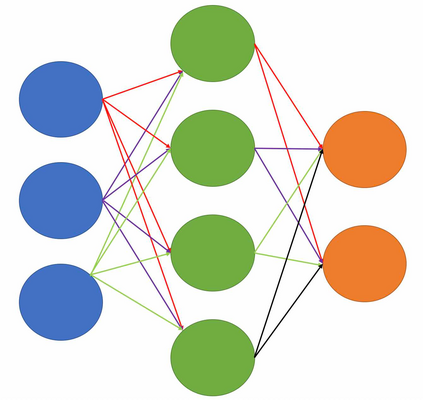The ever-growing popularity and rapid improving of artificial intelligence (AI) have raised rethinking on the evolution of wireless networks. Mobile edge computing (MEC) provides a natural platform for AI applications since it provides rich computation resources to train AI models, as well as low-latency access to the data generated by mobile and Internet of Things devices. In this paper, we present an infrastructure to perform machine learning tasks at an MEC server with the assistance of a reconfigurable intelligent surface (RIS). In contrast to conventional communication systems where the principal criteria are to maximize the throughput, we aim at optimizing the learning performance. Specifically, we minimize the maximum learning error of all users by jointly optimizing the beamforming vectors of the base station and the phase-shift matrix of the RIS. An alternating optimization-based framework is proposed to optimize the two terms iteratively, where closed-form expressions of the beamforming vectors are derived, and an alternating direction method of multipliers (ADMM)-based algorithm is designed together with an error level searching framework to effectively solve the nonconvex optimization problem of the phase-shift matrix. Simulation results demonstrate significant gains of deploying an RIS and validate the advantages of our proposed algorithms over various benchmarks.
翻译:人工智能的日益普及和迅速改进使人们重新思考无线网络的演变过程; 移动边缘计算(MEC)为AI应用提供了一个自然平台,因为它提供了丰富的计算资源,用于培训AI模型,以及低频访问移动和互联网系统设备生成的数据; 在本文中,我们在可重新配置的智能表面(RIS)的协助下,为在MEC服务器上执行机器学习任务提供了基础设施; 与主要标准是最大限度地实现吞吐量的常规通信系统相比,我们的目标是优化学习性能; 具体地说,我们通过联合优化基础站和RIS的分阶段组合矢量,最大限度地减少所有用户的最大学习错误; 提出一个交替优化框架,以优化两个术语的迭接性,从中衍生出组合矢量的封闭式表达方式; 以乘数计算法(ADMMM)的交替方向方法,设计出一个错误级别搜索框架,以有效解决阶段转移矩阵的非conx优化问题; 模拟结果显示,在部署各种矩阵方面有很大的优势。















